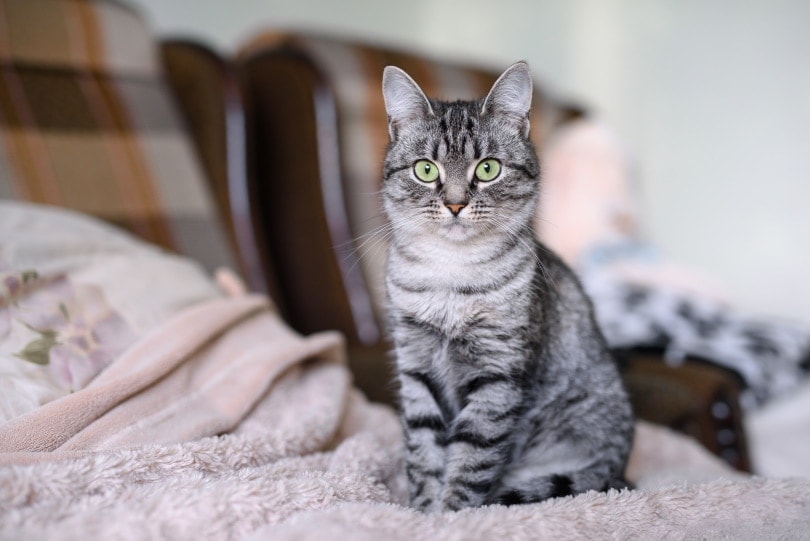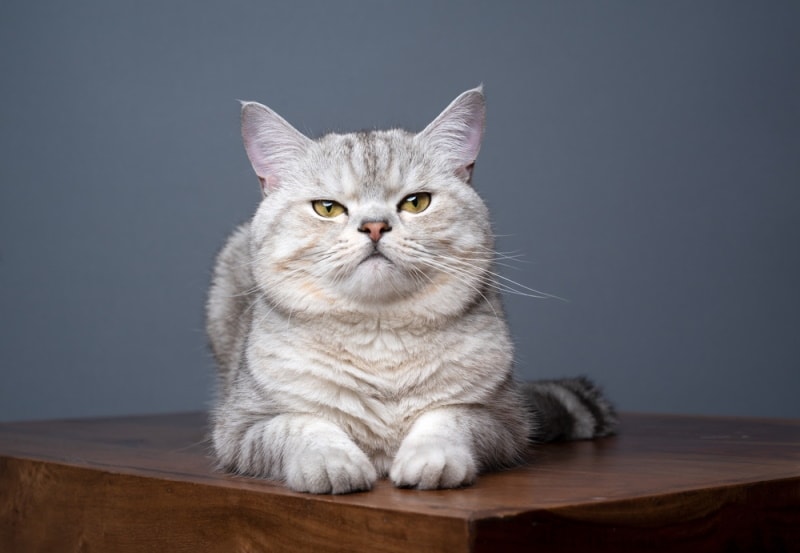10 New Types of Cat Breeds (With Pictures)
Updated on
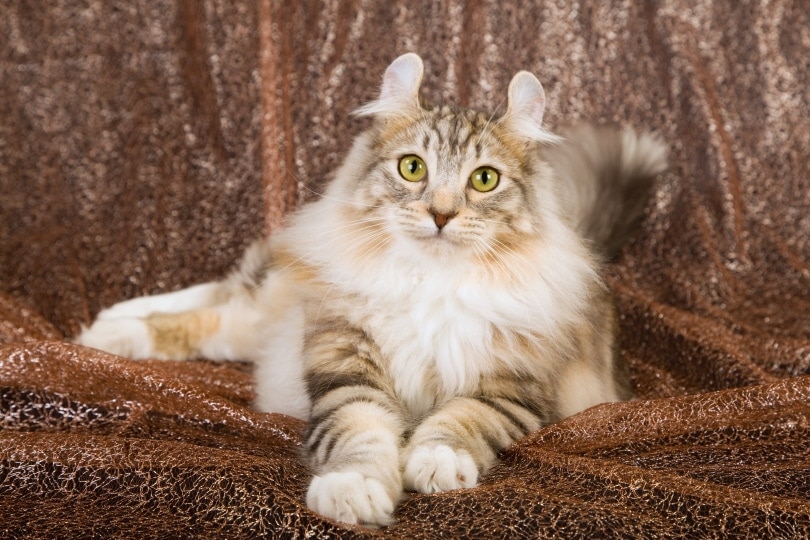
Cats are some of the most popular pets in the world, with good reason. What’s not to love with their cute toe beans, soft fur, and comforting purrs? More than 25% of homes in the United States have one or more cats as part of their family. Every species is unique, and each cat offers exciting opportunities and challenges for pet owners.
Entering the realm of cat breeds can be a wild ride. There are less than 100 total confirmed cat breeds no matter which association you turn to for information. Very few cats today are considered full pure breeds, and even if you include breeds in development or experimental breeds, the list of confirmed species is still woefully short. The International Cat Association (TICA)1 recognizes a grand total of 71 breeds, The Cat Fanciers Association (CFA)2 only has 44 officially listed, and Federation Internationale Feline (FIF)3 has the smallest list of all with 43 breeds.
Despite how rare they may be, new breeds are recognized by professional organizations and there are currently new and exciting breeds still in development to this day. Let’s take a look at some of the furry felines that were most recently accepted as a breed standard and those still working towards championships!
The 10 New Types of Cat Breeds
1. Serengeti Cat
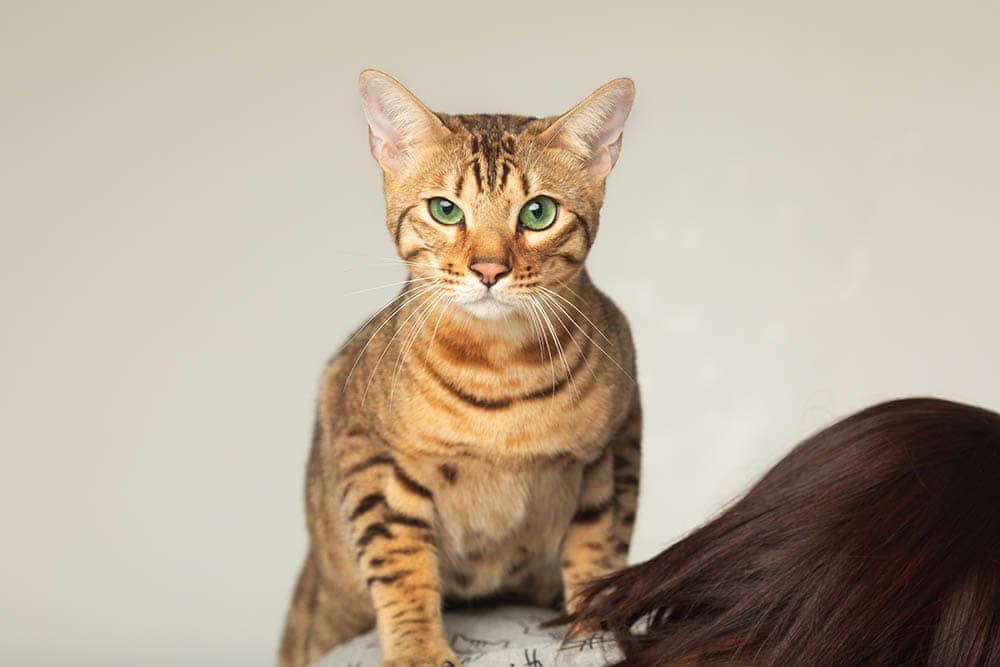
| Lifespan: | 10 – 15 years |
| Temperament: | Active, agile, athletic, loving, affectionate, loyal, social, vocal |
| Weight: | 8 – 15 pounds |
| Comparable Breeds: | Bengal and savannah |
Serengeti Cats are the delightful result of crossing a Bengal and oriental shorthair cat. First bred in the 1990s, they are officially recognized by the TICA, and It’s the only association to recognize them. The first Serengeti was bred by Karen Sausman, a conservation biologist who wanted to create a new breed of domestic cat to look like the wild and majestic African serval cat.
While the Serengeti looks much like the beautiful serval with its prominent spots, long legs, and large ears, the Serengeti have no wild blood and make perfect family pets. Affectionately nicknamed “Velcro cats” because of their clingy nature, Serengeti get along with just about everyone. They are friendly and confident and will happily seek out the company of humans or other pets. These feisty patterned cats are known for their high levels of energy, loyalty, extreme grace, and agility. Serengeti cats may have a ferocious coloring like their wild counterparts, but they make excellent pets.
2. Highlander Cat
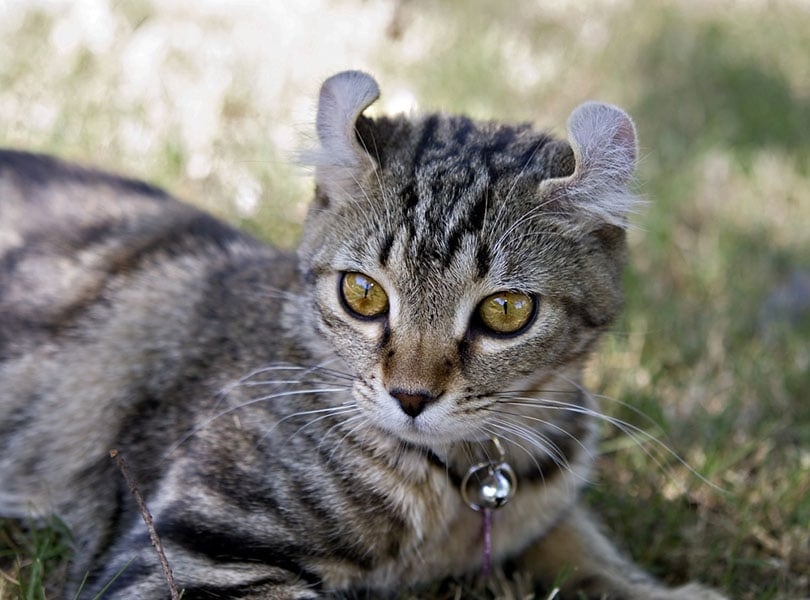
| Lifespan: | 10 – 15 years |
| Temperament: | Nurturing, affectionate, gentle, intelligent, social, energetic |
| Weight: | 10 – 20 pounds |
| Comparable Breeds: | Maine coon and Scottish fold |
While the Highlander Cat may still be an experimental breed, they are truly unique. The highlander has physical traits that resemble a wildcat, which isn’t surprising when you learn that they are a hybrid of a desert lynx and jungle curl. However, the highlander cat does not actually have any wildcat genes, but they’re affectionate and playful companions.
Their creation began in 2004, and they were originally named the highland lynx before being dubbed the highlander in 2005. Highlanders are solid and muscular and have unique curly ears, giving them their wildcat appearance. They are energetic, intelligent felines, so providing toys and ample play time are essential.
Highlander cats love to be the center of attention, and you won’t find them shying away from water. In fact, these gentle goofballs are fascinated by running water and will find ways to get themselves wet.
3. Aphrodite Giant Cat
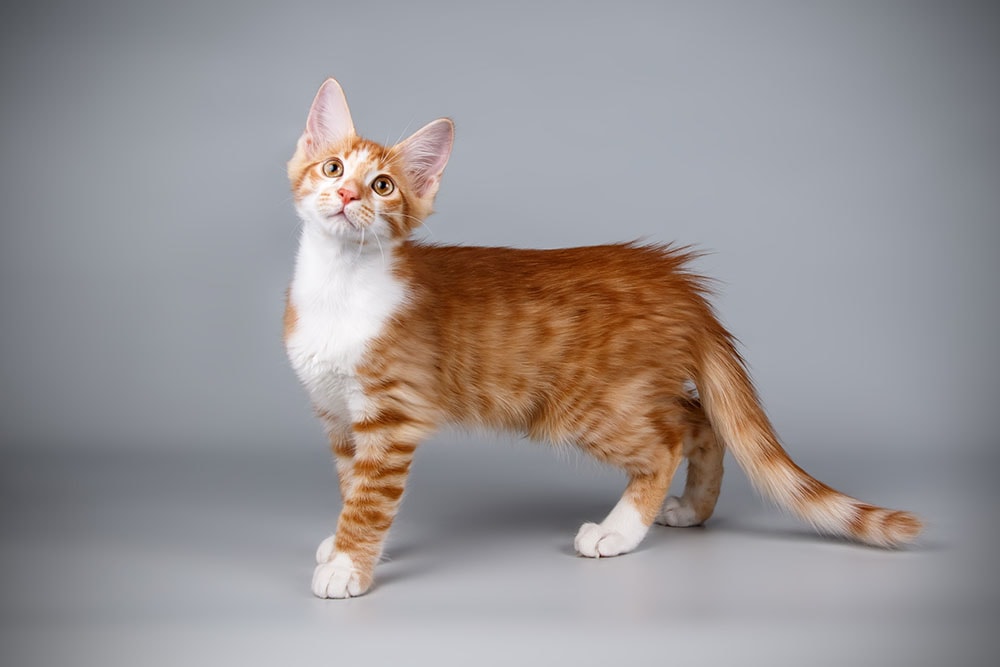
| Lifespan: | 12 – 15 years |
| Temperament: | Social, relaxed, attention-seeking, loving |
| Weight: | 11 – 24 pounds |
| Comparable Breeds: | Turkish van or Egyptian mau |
The Aphrodite Cat, also known as an Aphrodite giant or Cyprus cat, is one of the only two naturally occurring breeds on the island of Cyprus. Although the cats have been thriving in the wilds of Cyprus and are believed to be descended from felines living 10,000 years ago, they weren’t officially recognized as a breed until 2012.
Cyprus cats are often referred to as gentle giants due to their large size, thick fur, and long legs. TICA even describes this breed’s behavior as almost dog-like regarding their interactions with humans. This rare breed has a calm personality, making them perfect for any family, even those with small children.
4. American Curl Cat
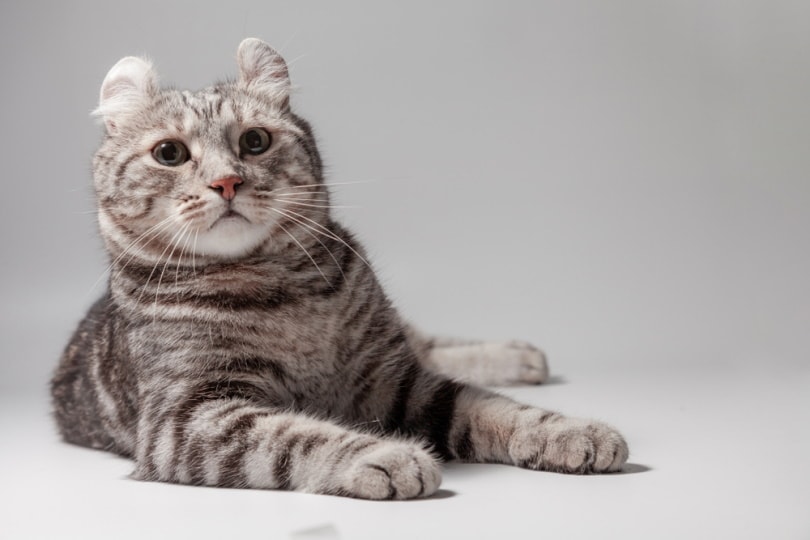
| Lifespan: | 9 – 13 years |
| Temperament: | Athletic, social, family-oriented, outgoing |
| Weight: | 8 – 12 pounds |
| Comparable Breeds: | Korat and nebelung |
American Curl Cats are the result of a natural mutation. The family that housed the original founding female states that the first kittens were born in 1981, but selective breeding for American curls didn’t begin until 1983. These kittens carried the gene for curled ears, creating the set of genetics accepted as a breed standard in 1987 by TICA. CFA admitted the breed a few years later, in 1993.
American curls are medium-sized and athletic in stature. They also appear to be on alert; this is due to their large and expressive eyes. The American curl’s charm doesn’t end there. You can find the fluffy felines right on their human’s heels, eager to cuddle and play.
5. Cheetoh Cat
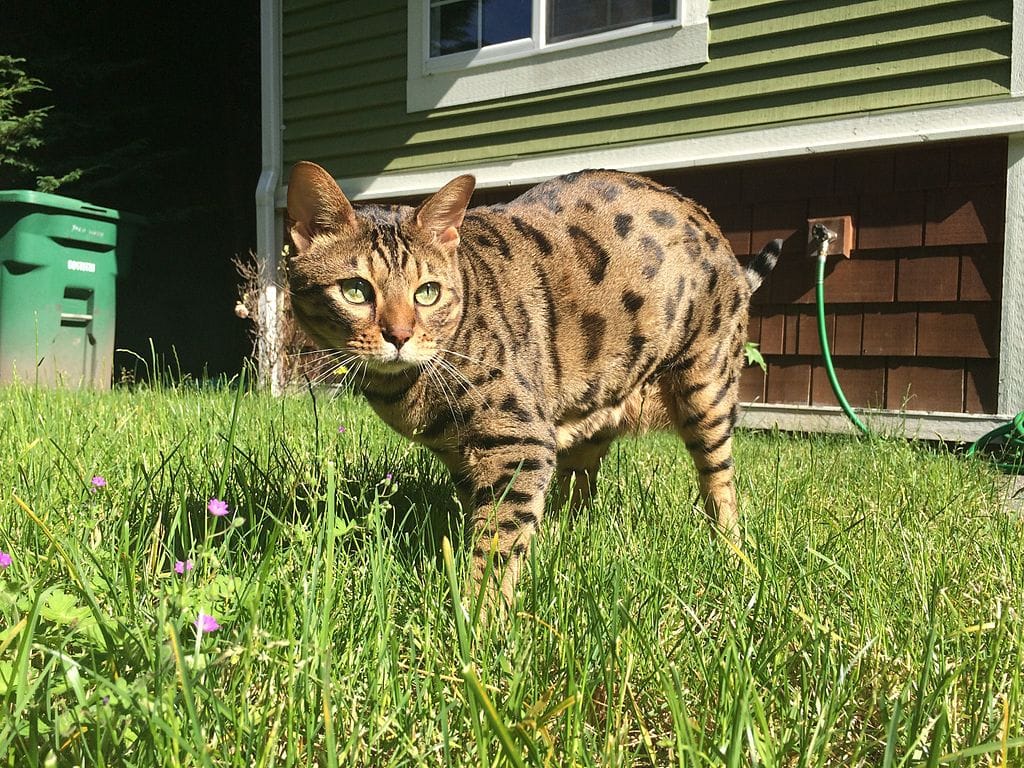
| Lifespan: | 12 – 14 years |
| Temperament: | Affectionate, social, intelligent, gentle |
| Weight: | 8 – 12 pounds |
| Comparable Breeds: | Bengal and ocicat |
Cheetoh Cats are a rare and fairly new breed. Descending from Wild Asian Leopards, cheetohs might be a bit difficult to locate to bring home as breeders are hard to come by. Carol Drymon, a breeder at Wind Haven Exotics, successfully crossed an ocicat and Bengal in 2001—creating this wonderful mix of a friendly housecat with a distinctive wildcat appearance. The first litters of cheetoh cats arrived in 2003, and they were officially accepted as a breed standard in 2004.
These wild-looking housecats are energetic and playful. They will enjoy hunting toys and performing agile tricks in their cat trees as much as they enjoy curling up in your lap for a good cuddle. They are so active you may even find your cheetoh waking you up in the mornings begging to get started. You will want to keep your cheetoh engaged with a catio or other social activities, but you can also teach them to walk with a lease or perform tricks.
6. Minskin Cat
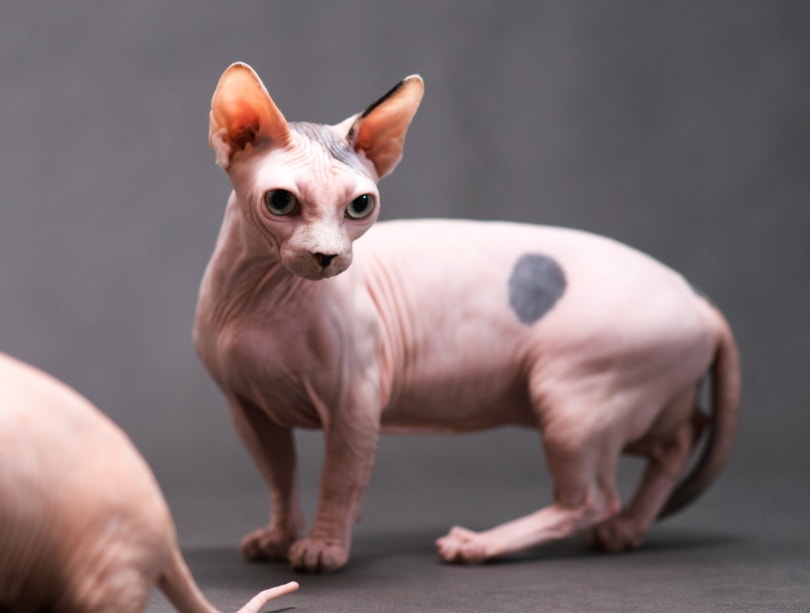
| Lifespan: | 12 – 14 years |
| Temperament: | Sweet-natured, friendly, intelligent, curious |
| Weight: | 4 – 6 pounds |
| Comparable Breeds: | Somali, Balinese, and American curl |
Created by Paul McSorely in 1998, the Minskin Cat is a carefully developed short-legged cat resulting from a direct cross between a munchkin and a Sphynx. The first minskin was born in 2000, and they are currently being examined by TICA for their breed standard. These tiny imps of the cat world are the newest of all cat breeds, but they’re impossible not to fall in love with.
Often described as the corgi of the cat world, minskins have short little legs and, on average, weigh only around 4 pounds. Don’t let their small stature fool you; these adorable cats have the same high energy and agility as most other cat breeds. Their short legs won’t stop them from scaling furniture and climbing cat trees.
Minskins have to approach obstacles differently than most cats, but the inventive felines always seem to figure out the best way to navigate the landscape. They adapt well to new surroundings and have an endearing eagerness to please, quickly making themselves at home and winding their way into your heart.
7. Tennessee Rex Cat

| Lifespan: | 12 – 18 years |
| Temperament: | Loving, affectionate, social, quiet |
| Weight: | 8 – 15 pounds |
| Comparable Breeds: | Maine coon and German rex |
The ferocious T-rex of the cat world, the Tennessee rex, is a relatively new cat breed resulting from a natural mutation. Franklin Whittenburg discovered the mutation in 2004 after he rescued a feral mother he found roaming on his property. Through research with breeders and TICA, Tennessee rexes were found to have a recessive gene producing their trademark curly coats with a shining effect. T-rex’s were officially accepted as a registered breed in 2009, but they still haven’t reached won any championships.
The T-rex will chase you around your home and demand to be the center of attention. They are a loving breed that wants to spend their time with humans, and they can be quite vocal when hungry. You will find these furry felines begging to be in your lap or sitting next to you on your bed or couch.
8. Munchkin Cat
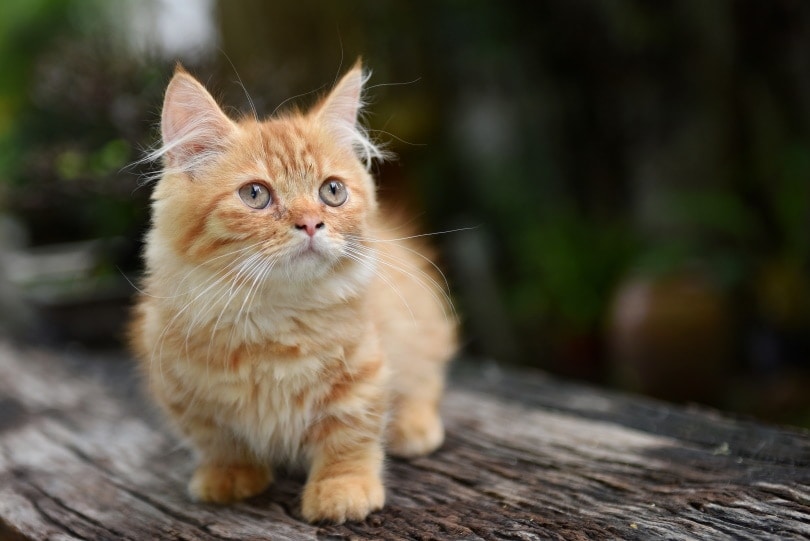
| Lifespan: | 12 – 14 years |
| Temperament: | Playful, active, kitten-like, affectionate |
| Weight: | 5 – 9 pounds |
| Comparable Breeds: | Somali and Cornish rex |
While the first recorded reference to a “short-legged” or dwarf-like cat was in the 1940s, the first official munchkin cat took the world by storm in 1983. Blackberry, the mother of the munchkin breed, carried a natural genetic mutation of dwarfism leading to the munchkin’s short stature, but thanks to their feline spines, they don’t suffer from the same back issues as other small breeds. TICA accepted the munchkin as an official breed in 1995, but they are the only registry to do so as others are hesitant due to potential health risks from the mutations.
Munchkin Cats are fun-loving felines that won’t hesitate to sprint into your heart on their little legs. They’ll spend time scurrying around the house or chasing toys, and sometimes you might catch them sitting back on their hind legs. Munchkins are as intelligent and confident as they are loving and sociable.
9. Toyger Cat
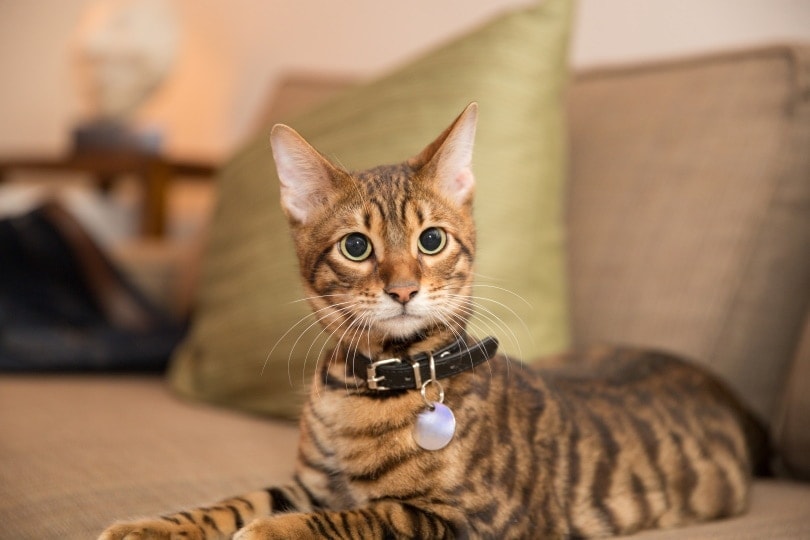
| Lifespan: | 10 – 15 years |
| Temperament: | Affectionate, outgoing, active |
| Weight: | 7 – 15 pounds |
| Comparable Breeds: | Bengal and domestic shorthair |
Toyger Cats are a special designer breed, meaning they were purposefully developed by breeders. The first toygers made their grand appearance in 1980, storming the cat world with their unique coloring that contrasted their calm, domestic temperament. TICA officially recognized them as a breed in 2007, though other agencies are still on the fence. Judy Sugden’s goal in crossing a Bengal with a domestic shorthair was to raise awareness for tiger conservation in the 80s, but the result was a cat with a tiger-like appearance and the temperament of a domestic house cat. Toygers, a play on the words “toy” and “tiger,” are hard to miss in a crowd; they look exactly like miniature tigers.
Despite their wild appearance, toygers are friendly and enjoy the company of their chosen humans. The cats are alert, active, and even enjoy playing in the water! Toygers prefer being around people and enjoy spending lots of quality time playing and learning tricks with their families.
10. Lykoi Cat
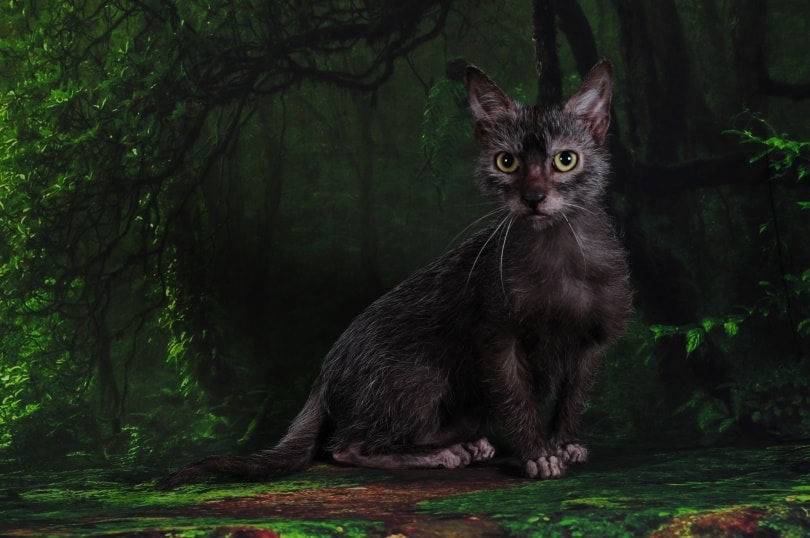
| Lifespan: | 12 – 15 years |
| Temperament: | Active, playful, intelligent, loving |
| Weight: | 6 – 12 pounds |
| Comparable Breeds: | Domestic short hair |
There may not be a full moon rising, but the Lykoi Cat undeniably looks like a werewolf. Thanks to their slender body, fascinating hairless patterns, unique dome-shaped head, and expressive eyes, these feral-looking felines are affectionately referred to as wolf cats. Their werewolf-like appearance comes from a naturally occurring gene found in feral cat populations, and the breed itself was created in 2011. Lykois are considered an experimental breed stemming from a genetic mutation in domestic short-haired cats.
These highly intelligent cats love to play fetch, chase, and hunt toys. They love spending time with their humans as much as they love being left alone and playing by themselves. Lyokis are full of energy, but they won’t shy away from showering with you or curling up in your lap after a long day. You will never be bored with a lyoki at your side.
Final Thoughts
New cat breeds are constantly in development, and no one knows which new felines will be discovered or created next. The world of cat enthusiasts never sleeps, and breeders are working hard to develop species that can be added to the cat breed registries. Whether you’re seeking the newest breed for a new faithful companion or the world of creative cats enthralls you, a hybrid feline can make an exceptional addition to your family.
Featured Image Credit: Linn Currie, Shutterstock

